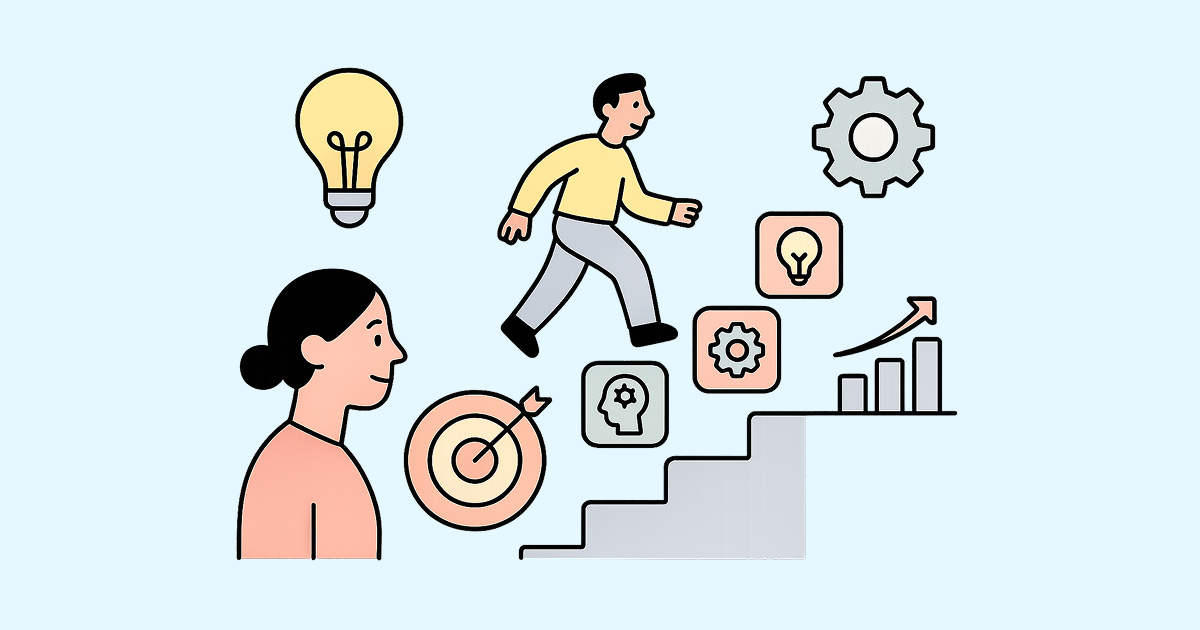Tactics & real-world insights to improve employee experience

Employee experience isn’t just an advantage in the hiring process.
It impacts how engaged an employee is, which in turn, has huge results and impact.
Research from Gallup revealed that disengagement costs a business about 34% of the employee’s salary, in absences and lost productivity.
But here’s the good news: there are strategies and tools that have been coined and strategised by individuals and organisations, all with the goal in helping to improve employee experience.
And all will be covered in this article; you’ll learn:
- The difference between employee experience and employee engagement
- The major employee experience models
- Practical tips on how to improve employee experience
- How to measure employee experience
We’ve also featured insights from Iris Pruefer, Chief People Officer at omni-channel retailer MediaMarktSaturn.
She joined as a guest on an episode of the Moving Forward podcast and shared the strategic decisions she took to improve employee experience.
Employee experience vs employee engagement
As MediaMarktSaturn CHRO Iris Prüfer pointed out, employee experience isn’t that different from customer experience.
It is the sum of every touchpoint the employee has with their organisation.
The result is how the employee feels about their employer and their specific role. In other words, employee engagement is the natural result of the employee experience.
The result of higher engagement is astonishing for productivity and employee retention.
These are just a few of the results of employee engagement found by Gallup:
- 10% higher customer loyalty
- 23% higher profitability
- 78% less absenteeism
- 51% less turnover for low-turnover organisations and 21% less turnover for high-turnover organisations
- 63% fewer accidents
- 32% fewer quality defects
Expert employee experience models
With so much on the line, it’s no surprise that all manner of experts have analysed the employee experience.
Businesses, consultants, and academics have all studied how these touchpoints affect workers’ mindset towards their businesses.
Here are just a few popular examples:
The Job Demands-Resources model
This theory is focused heavily on practical logistics.
It breaks down the demands on each role as well as the resources available. The goal is to balance the two to optimise both the possible results and the worker’s experience.
The Deloitte model
The massive business consultancy developed this model through employee interviews.
Its keys are:
- Meaningful work
- Hands-on management
- Positive work environment
- Growth opportunity
- Trust in leadership
The Gallup Q12: Employee Engagement Survey
Gallup developed the Q12 model, which is a pyramid broken down by the following needs:
- Basic
- Individual
- Teamwork
- Growth
It measures them through a 12-question survey.
The AIHR’s Say-Stay-Strive model
The goal of the Say-Stay-Strive model is to produce employees who are vocal advocates, who want to remain with the company and contribute their best work.
It looks at work, people, opportunities, rewards, practices, and quality of life.
Practical and proven tools to improve employee experience
Each model of examining employee experience and engagement can reveal different aspects of a specific business.
However, many models share underlying ideas about employee experience.
Regardless of which model you use to evaluate employee engagement, there are practical tools you can use to improve the employee experience.
Design for milestones
Plan for the many transitions that will happen during the course of an employee’s time at a company.
Some, like onboarding, are obvious. Others, like recognition and promotions, sometimes fall by the wayside.
There should be a plan in place across management to plan for employee transitions.
- How does each role grow, and what does it take to move into a new one?
- What qualifies as above-and-beyond work?
- How do you make sure that every employee’s impactful events, from giving birth to losing a parent, are given equal support?
This plan should be clearly communicated across management and to employees, where it’s appropriate.
Foster open communication and feedback loops
In fact, open communication is key across the organisation.
To the maximum extent possible, employees should know what’s happening with their role, department, and organisation.
Harvard Business Review even found that transparency about the traditionally forbidden subject of salary led to more job satisfaction.
A key aspect of this is the feedback loop for both employee experience and their job performance.
A single conversation is never enough. It needs to be followed by actions drawn from that conversation, then another check to evaluate the results of those actions.
Personalise learning and development opportunities
Personal and career growth is an underlying factor of many employee engagement models.
Learning and development opportunities are a great way to make an employee feel supported in their career trajectory.
The organisation also benefits from their new skills. To maximise its impact, it’s helpful for these opportunities to be tailored to the employee.
At GoodHabitz, we focused on skills-based learning because it can be personalised, as well as adapted to organisational goals.
Whatever tool you use, make sure it can adapt to each employee.
Enhance physical and digital work environments
As we’ll see in our MediaMarktSaturn discussion below, these are great opportunities to improve employees’ daily lives.
Ergonomic work set-ups and workstations that prioritise employee comfort pay huge dividends.
Likewise, technology that is both streamlined and user-friendly improves communication and morale.
Lead with Values & Inclusion
This can feel nebulous to employers but crystal-clear to employees.
The people whose everyday work is affected by decisions can often see if they’re driven by values or profit. It can be transformative to look at management decisions through the lens of the company’s stated values.
Inclusion is another area where the facts on the ground are lagging behind the proven statistics.
McKinsey found that companies with ethnic and cultural diversity in management outperformed their lagging competitors by 36% in profitability, while gender diversity in executives could lead to outperformance of 48%.
Case study: MediaMarktSaturn’s employee experience transformation
MediaMarktSaturn evolved from a brick-and-mortar to an omnichannel retailer.
Along the way, they developed an entirely new strategy by evaluating the employee and customer experience with the same tools.
They found the keys to improving their employees’ experience were technology, physical workspace, and culture.
Technology
Depending on the business, this can mean everything from the tools used to communicate to those needed for the employees to do their job.
There needs to be comprehensive training on the tools, and they need to be up to date.
As MediaMarktSaturn CHRO Iris Prüfer said in our interview:
“If you look at what kind of hardware, software, and communication tools you’re providing: how modern are they?”
Physical workspace
Regardless of the kind of environment, employee needs should be at the centre of the design.
That can mean ergonomic chairs in an office or natural light in a factory. Look at both physical comfort and mental wellbeing. Iris explained:
“It was about creating a good working atmosphere and environment in the office and the stores,”
Culture
MediaMarktSaturn decided to shape their culture around their core values.
This begins at hiring and continues throughout management.
They focused on attracting the people they wanted and evaluating employees by those qualities as well as their skills.
“How do you treat your employees? How is the working atmosphere? How do leaders treat employees, giving feedback and further development?”
Iris detailed the questions they wrestled with, then went on to note:
“When we look for new employees, especially leaders, we very much evaluate if they fit our core values.”
As they implemented these changes, they continued to evaluate responses and adjust from there.
One example is their learning and development program. They had to restructure trainings to accommodate time and space needs, as well as offering personalisation.
To study employee experience, MediaMarktSaturn instituted anonymous Net Promoter surveys.
They then used these results as the basis for management conversations with employees.
This is key, as survey participation drops if employees think they don’t go anywhere.
After implementing improvements to their employee experience and instituting this feedback loop, MediaMarktSaturn has seen marked improvement across the organisation.
It’s another example of how focusing on employee experience can improve business across the board.
How to measure employee experience
One thing MediaMarktSaturn clearly shows is how important it is to mix qualitative and quantitative tools.
Begin with quantitative measurements like anonymous engagement surveys and eNPS, which measures how likely an employee is to recommend a workplace.
From there, move to interviews and workshops to flesh out these findings.
The most important thing about getting clear employee feedback is acting on it.
It’s likely to increase employee engagement, with all the benefits we discussed above.
On the converse side, it can demotivate employees if they see their feedback is not used.
The transition: common challenges and easy wins
Any transition, large or small, will encounter some initial resistance.
People get set in their ways, or they worry that it will make their jobs harder.
It’s important to get every level of management on board so they can troubleshoot problems.
One important element of that is making sure managers have the resources to implement the change.
For example, a new initiative for personalised training will mean nothing to a department that’s too understaffed to perform its core responsibilities.
Make sure time and budget are there for every department to implement the change.
Another way to get things going is with a couple of easy wins.
An employee recognition program highlighting people implementing the new ideas can highlight the positives.
Ensuring access to learning and development courses, either existing or new, can be another way to make employees sense a culture of career growth.
Conclusion: build a standout employee experience
There are huge benefits to an exceptional employee experience, from lowering accidents and expensive turnover to higher profits and productivity.
It’s also a competitive opportunity, as Gartner recently found that only 31% of employees report that they’re enthusiastic and energised by their work.
Best of all, there are specific things you can do to get there.
There are expert analyses of what affects experience. And regardless of which employee experience model you explore, there are concrete actions to take.
Examine your employees’ physical workspace, technological tools, and impression of the workplace culture.
Institute a feedback loop that includes visibly implementing employee ideas - the results can be surprising.
For more inspiration, check out our blog on feedback or our learning library.
FAQ: employee experience
What is the difference between employee experience and employee engagement?
Employee experience is what happens to an employee at work, from their physical workstation to communication with management. Employee engagement is how energised an employee is about their work, which is largely the result of their experience.
What is an employee experience model?
There are many different ways of evaluating how an employee experiences their organisation and their role. Some popular ones are Job Demands-Resources, the Deloitte Model, Gallup Q12, but there are many, many more.
How can organisations improve employee experience quickly?
This varies by organisational resources. If there’s budget, a quick win could be making the physical workspace more comfortable. Another could be offering a learning and development programme, so employees feel they can build a future.


